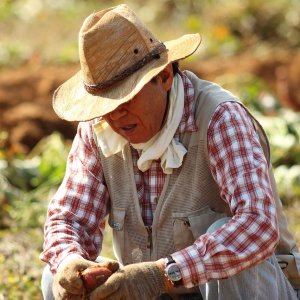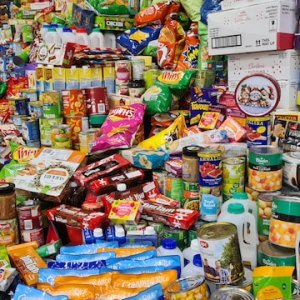Establish Self‑Sufficiency Priorities

STORY INLINE POST
Q: How did the agricultural sector perform overall during the last presidential administration?
A: During the administration of Enrique Peña Nieto, the agricultural sector experienced significant growth. Since 2015, the agricultural commercial balance has been in surplus, which can be explained by the significant increase in the production and trade of fruits and vegetables. This sector has grown steadily since 1994, when NAFTA was enacted. In almost 24 years, production volume of fruits and vegetables has increased over 130 percent and is now on par with the country’s production of grains and oilseeds.
The livestock segment has also enjoyed successful results, growing almost 100 percent in the past 24 years from 12 million tons to 23 million tons of beef, pork, chicken and eggs. Growth in this segment suggests an increase in consumption of animal protein and has also boosted imports of yellow corn, which is basically used to feed livestock. In fact, in 2018, Mexico was the world’s top importer of yellow corn.
All in all, the agricultural sector is performing well and continues to grow. This sector is the third-largest exporter in the country, just behind the automotive and manufacturing industries. Growth rates for the past three years have been above the country’s GDP gains.
Q: President López Obrador has vowed to make Mexico self-sufficient in terms of agriculture. What opportunities does this create?
A: Agricultural self-sufficiency depends on the product. For instance, when it comes to grains and oilseeds, Mexico is not self-sufficient. The country does not produce enough to cover the demand for rice, yellow corn, soy and wheat used in breadmaking. However, it is self-sufficient in the production of white corn, used for human consumption and Mexico’s flagship product. In fact, we have a surplus of white corn, which is also exported to countries like Venezuela. Other products in the grains and oilseeds category in which Mexico is self-sufficient are beans, sorghum and durum wheat.
Regarding livestock, although we have increased our production, the country still cannot cover its own demand, with a deficit of around 40 percent in pork, 20 percent in chicken and 19 percent in milk. However, we are self-sufficient in beef and eggs. We are also self-sufficient and significant exporters of coffee and sugar. We are the eighth-largest exporter of the latter globally.
No country in the world is 100 percent self-sufficient in terms of alimentary products. What we need to do as a country is protect our food supply and our comparative advantages. We cannot be champions of every product, which is why it is important to establish priorities.
It is true that we need to make certain logistics adjustments within the country. For instance, we move a great deal of white corn from the north of the country to the southern and southeastern states. In this regard, we agree with the president that production of such commodities in the south could boost development of the area. However, while these states have the required water to engage in production activities, the government also needs to participate in the development of public services, such as irrigation infrastructure, highways and storage facilities. If we can do this, the southern states can start their own production instead of constantly paying freight from Sinaloa.
Another example is rice. Because this crop requires a great deal of water, we need to define whether it makes more sense to grow it ourselves or to import it. On many occasions, importing makes better sense and is more economical. For instance, Mexico imports 95 percent of its total soy bean consumption. Most of these imports are used for the production of oils for domestic consumption, 95 percent of which are made in the country. The remainder is then transformed into soy pasta, which is used to feed livestock. Mexico is the fourth-largest producer of soy pasta for the livestock sector. In this case, it makes more sense to import the raw product and then transform it to provide an added value.
Each case is different and must be analyzed independently, rather than as a whole. GCMA has generated different indicators that can be used by the government to conduct respective analyses.
Q: How do you expect the federal government’s program of guaranteed prices to impact the market?
A: Guaranteed prices can lead to market distortion. Purchasing products from small farmers at a high price also can have significant budget repercussions. We agree with President López Obrador that there is a high rate of poverty in the rural sector that hurts the country and we support his administration’s effort to fix this. However, we believe that guaranteed prices should be implemented in regions that suffer from a production deficit, such as the southern states.
The idea behind guaranteed prices, which are above the market average, is to help farmers increase their production and productivity. Instead of producing 2 tons of product per hectare, they can produce 5 or 6 tons per hectare. However, this program must be accompanied by improved seeds, technology, training and technical assistance. We also need to make sure the program is well-implemented, with an accurate registry of eligible companies. Otherwise, we risk having medium-sized or large producers trying to be included in the program.
Q: What are GCMA’s expectations for the agricultural market in the coming years?
A: Now that the USMCA negotiation has ended, the government must focus on ratifying the agreement along with Canada and the US. Having a treaty provides the markets with a degree of certainty, especially considering the geopolitical problems that are surfacing between the US and China.
If these problems continue, the Mexican market could benefit from our advantages in the agri-industrial sector, mainly with products where we have a competitive advantage, such as fruits and vegetables and certain livestock that complements the US offering. USMCA’s ratification also provides us with access to raw materials, such as grains and oilseeds, from the largest exporter of these products in the world, which guarantees the country’s national supply.
It is important to have an open market and to continue working to diversify our exports in the agricultural sector. I am convinced that by the end of 2019, Mexico will still be among the 10 largest agri-industrial powerhouses in the world. We estimate an increase in production of all agricultural products from 281 million tons to 284 million tons. The fruits and vegetables segment will continue expanding but we need to increase our production of grains and oilseeds to reduce our imports in this category. Coffee and sugar will remain stable while the livestock segment will also continue growing. We expect this will allow us to guarantee supply and the degree of alimentary safety that the country requires.
Grupo Consultor de Mercados Agrícolas (GCMA) is a Mexican consultancy with over 22 years of experience. It contributes to the development of commercialization strategies for producers, distributors, service providers and the government























